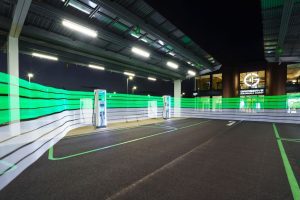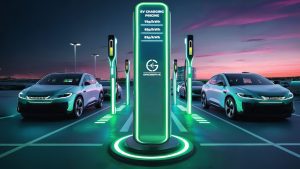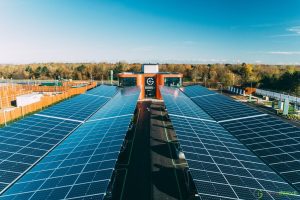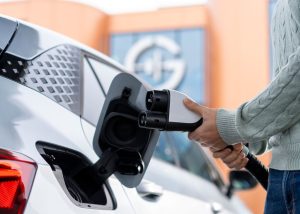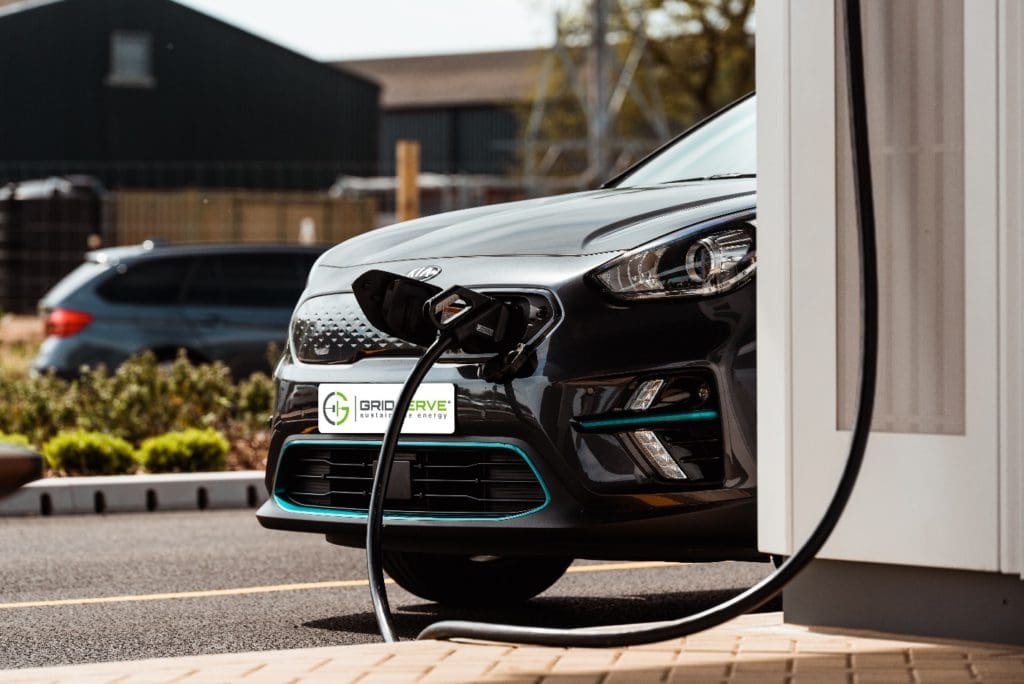

If you’re new to the EV space or thinking of making the switch to an electric car, you may have noticed a lot of new language floating around.
Some people like to wield acronyms and complex jargon like a badge of honour… but we think it’s easier if everyone just knows where they stand.
So, we’ve rattled through our EV dictionary to decode some of the terminology you’ll find when taking your first steps in the world of electric cars and charging.
Here’s a handy A to Z of the most common electric car terms:
A is for AC charging
AC stands for alternating current (as opposed to DC, which is direct current). AC is the way electric power travels across the grid and is then transformed down to DC before it’s used to power your TV and kettle.
Electric cars can accept AC charging and will then do the conversion to DC on-board with their own transformer. As a result, AC charging is slower than DC.
DC charging does the conversion from the grid on the charging unit, so your car doesn’t have to. This means speeds are quicker and is what you’ll find on the GRIDSERVE Electric Highway.
B is for BEV
It’s a complicated way of saying electric car. BEV stands for Battery Electric Vehicle, a vehicle that only uses a battery and electric motor for propulsion and does not have an internal combustion engine. In the same way that a PHEV is a plug-in hybrid electric vehicle, which combines battery power with internal combustion engine.
C is for CCS and CHAdeMO
These are the two main connectors used for DC charging. CCS (Combined Charging System) is used on pretty much all new electric vehicles, while CHAdeMO (CHArge de MOve) is predominantly on older vehicles made by Nissan and a handful of other Japanese manufacturers. You’ll find both across our network.
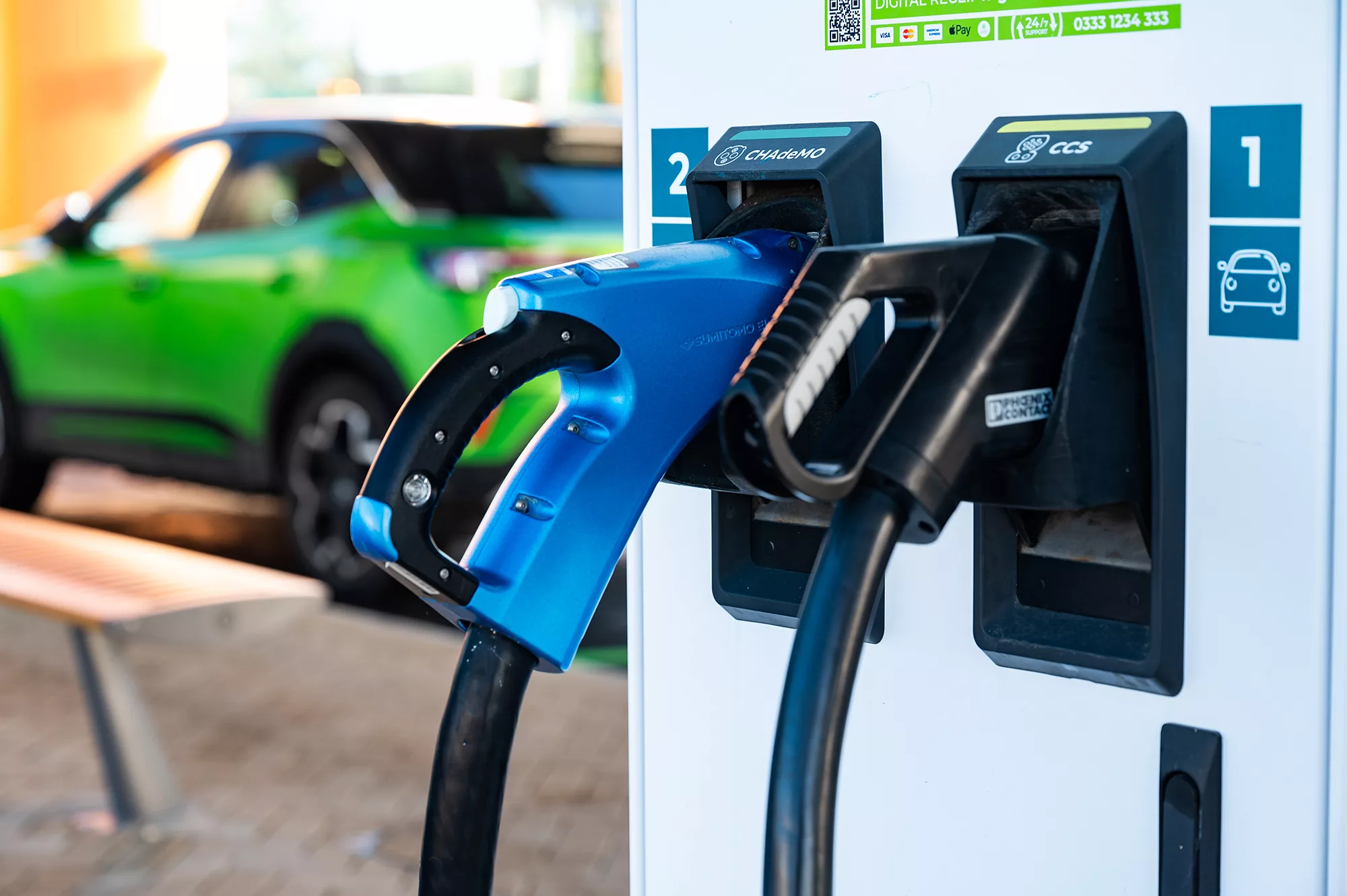
D is for Dual Charging
If you see a charging point that says it can dual charge, it means that two cars can plug into the same unit at the same time. Power will often be split, so charging will be slower overall, but it means you don’t have to wait in the queue.
E is for Electric Forecourt®
These are GRIDSERVE’s flagship sites and the ultimate charging experience. Designed from the ground-up as EV charging hubs, Electric Forecourts® offer a huge range of charging options as well as office space, a relaxing lounge and refreshments.
F is for fast charging
Fast, rapid, ultra-rapid – these are the common terms applied to different levels of public charging. Fast charging is generally via AC connectors offering either 7kW and 22kW. Rapid charging offers up to 50kW DC power (enough for 80% charge in less than an hour), while ultra-rapid provides over 90kW, or in our case up to 360kW via our High Power chargers. That’s enough for a top up in less than 30 minutes.
G is for GRIDSERVE Electric Highway
We operate chargers across the UK and this is called the GRIDSERVE Electric Highway. These include our Electric Hubs at with Dual Charging Medium Power chargers and Electric Super Hubs with High Power chargers at motorway services, Electric Retail Hubs at popular shopping destinations and our standalone Electric Forecourts®. You can find your nearest GRIDSERVE charger with our live map.
H is for home wallbox
If you’ve got off-street parking, you’ll be able to install a home wallbox charger. This is a unit that connects to your electricity supply and allows you to charge your electric car while parked at home. It’s a great way to charge overnight when electricity is cheaper and will save you money compared to filling up a petrol or diesel car.
I is for ICEing
ICE stands for internal combustion engine – or in more regular language, petrol or diesel engine. ICEing is something that can leave EV drivers very frustrated as it’s when an ICE vehicle parks in an EV charging bay and blocks it for use. Very unfriendly.
J is for journey planning
Electric vehicle ranges are increasing all the time, but the chances are, if you’re going on a longer road trip, you’ll need to plan ahead and see what chargers are available nearby. Our map is a great place to start with live availability, as well as using our app – the complete EV charging companion.
K is for kilowatt hour (kWh)
Instead of a car being defined by its engine capacity expressed in litres, it’s now defined by its battery size – the unit of this is kilowatt hours (kWh). Electric car battery capacity is commonly between 30kWh and 100kWh and directly relates to the amount of range. On average, electric cars consume 34.6kWh to travel 100 miles, so a 30kWh battery will have a range of less than 100 miles.
Naturally, larger batteries will take longer to charge than smaller ones, however it depends what charger you’re plugged into – that’s where kilowatts (kW) come in. Chargers are rated in kW and higher-powered units will have a higher kW rating and will add charge to your vehicle faster.
L is for lithium-ion battery
This is the battery chemistry that is most commonly used in electric vehicles due to its high energy density and relatively low weight. It’s also what you’ll find in your mobile phone and laptop batteries.
M is maximum charging rate
This the peak power that your car can charge at, expressed in kilowatts (kW). Each vehicle has a different maximum as well as how long it can hold this peak for. It directly impacts that speed your battery will recharge. Commonly this is known as a charging curve.
N is for network
The total mass of electric car chargers across the UK, Europe and world is often referred to as the EV charging network, and at GRIDSERVE we’re one very important part of this. The network includes home charging, public locations, workplace chargers and everything in between… and it’s constantly growing, making it easier and more convenient to charge.
O is for one-pedal driving
One-pedal driving does what it says on the tin… it allows you to drive by just using one pedal (the accelerator) thanks to regenerative braking. Regen braking means that when you lift off the accelerator pedal or press the brake, the system regains lost energy and pumps it back into the battery to increase range.
Some cars have stronger regenerative braking systems than others and can come to a complete stop by just lifting off the accelerator without touching the brakes (i.e. one-pedal driving). Cars that do this best include the Nissan LEAF, Polestar 2 and Hyundai IONIQ 5.
P is for pre-authorisation
A pre-authorisation charge or ‘holding fee’ is a temporary charge that we issue when you initiate a charging session on the GRIDSERVE Electric Highway. We do it to make sure the payment method is working.
After you plug the connector into your car, you’ll be asked to tap your contactless card to begin charging, and this is when the will be taken from your account. Once the charge session is complete, the preauthorisation fee will be released and you’ll only be charged for the kWh used.
Q is for queuing
This is just good charging etiquette. We know that at certain times our chargers get busy and so it’s important to avoid queue jumping and understand who is next in line. After all, you wouldn’t overtake someone queuing for a petrol pump, would you?
R is for RFID cards
This stands for Radio-Frequency Identification cards. It’s a technology used to wirelessly identify and track objects and we use it for EV charging access and payment. You don’t need one to charge with us, though, as we have contactless payment as standard across our network, as well as our app.
S is for solar power
We don’t just believe in electric vehicles at GRIDSERVE but also want to consider how energy is generated. By making sure energy comes from renewable sources, such as solar or wind, we can maximise the impact in moving the needle on climate change.
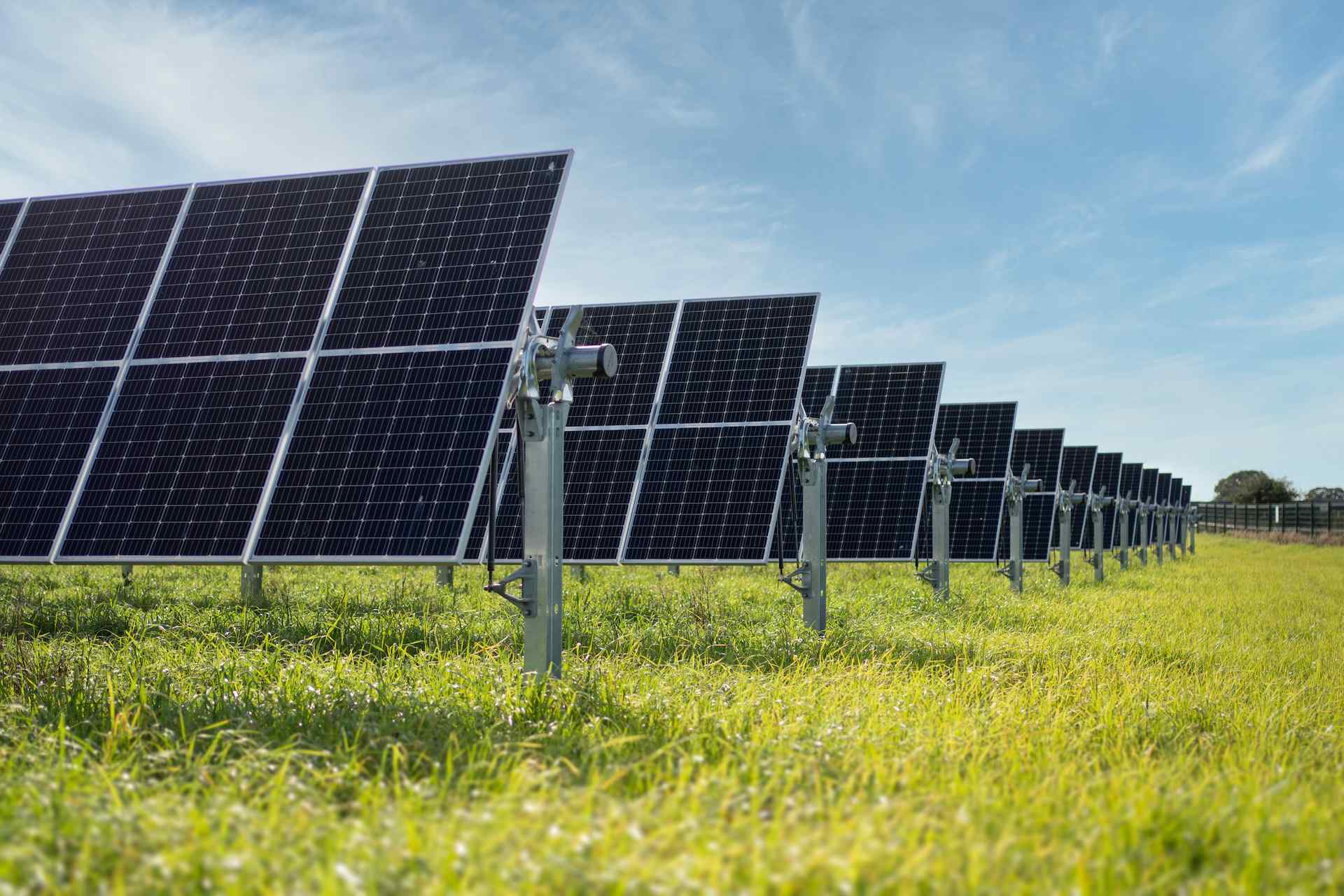
T is for tethered cables
Tethered cables are those where one end of the cable is securely fastened to the charging unit with the other free to plug into your car – like those on the GRIDSERVE Electric Highway. Think of tethered cables like a traditional petrol pump.
Untethered cables are where both ends are unplugged. This is likely what you’ll have to use at public charging sites in supermarkets, as well as when charging at work. It could also be the case for a home wallbox charger, depending on your unit, as some come with tethered cables.
U is for ULEZ
A ULEZ is an Ultra-Low Emissions Zone, implemented across a town or city to prevent the most-polluting cars from driving in them (or at least having to pay a surcharge to do so) in a bid to improve air quality. London currently has one in place, while Clean Air Zones are popping up across the UK. Electric and hybrid cars are exempt from ULEZ charges as they don’t emit harmful local emissions.
V is for V2L
V2L stands for vehicle-to-load and is a feature available on some battery electric vehicles (BEVs), such as the Genesis GV60, that allows stored energy to power external devices, such as camping equipment, power tools and a variety of other consumer devices.
Similarly, vehicle-to-grid (V2G) is a technology that enables energy to be pushed back to the power grid from the battery pack of an electric car – for example if you’re plugged in at home, you can use energy stored in your battery to supplement your household electricity at peak times to save money.
W is for WLTP range
Here’s another mashup of letters, and this one stands for ‘Worldwide Light Vehicle Test Procedure’. It refers to a method of testing electric, plug in hybrid, petrol and diesel cars for energy consumption as well as CO2 emissions.
The main benefit of the test for EV drivers is that it allows for a fair comparison of cars in terms of their electric range, providing a realistic, standardised figure. It’s important to remember it’s essentially a lab test so real-world range will be slightly less – just like mpg for petrol and diesel cars is usually lower than the claimed manufacturer figures.
X is for eXtra wide bays
Ok, so we struggled with this one. But the point stands – charging needs to be accessible and at our Electric Super Hubs we offer an extra wide bay for every six chargers for those who need extra space. We’re constantly reviewing and updating our designs, including at our Electric Forecourts® to make sure charging your EV is as convenient and inclusive as possible.
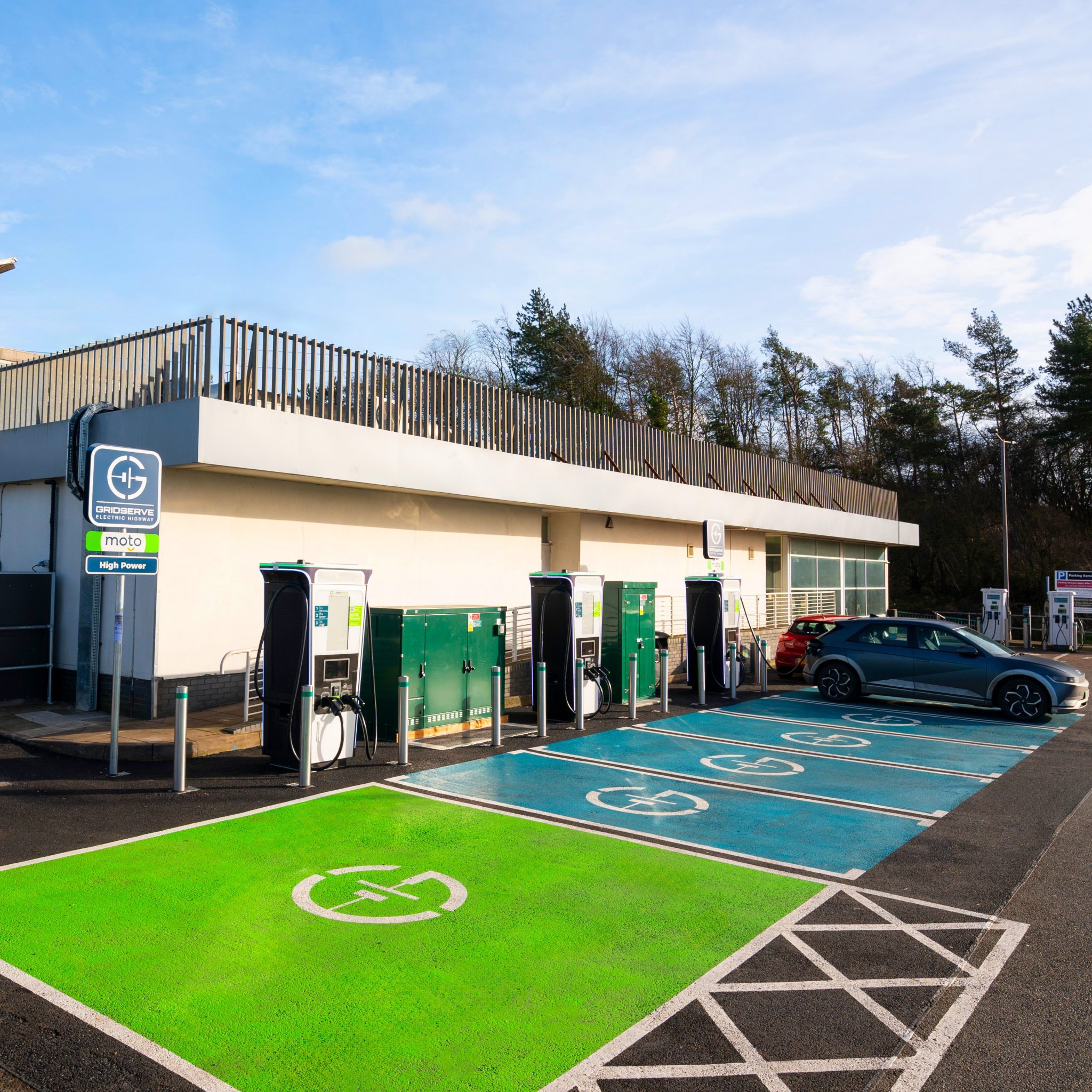
Y is for Model Y
The Tesla Model Y is the world’s biggest selling EV. Making the switch to an electric car opens you up to a world of new, exciting models – check out the latest and greatest here.
Z is for ZEV
This stands for Zero Emissions Vehicle (as opposed to an Ultra Low Emission Vehicle) and is a type of plug in vehicle that emits no pollutants from the tailpipe, such as electric vehicles and fuel cell electric vehicles. It’s one of the reasons we love electric power so much.
For more on electric vehicles explore our complete guide to electric vehicles, including a step-by-step journey to completely understand what an EV is, how an electric car works and some of the benefits of living with an EV.
